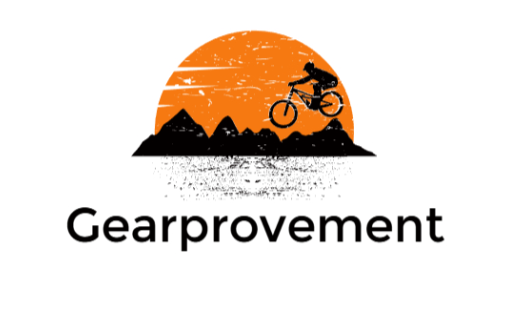Discover the ultimate protection and style with our in-depth guide to the top-rated mountain bike helmets that every rider needs to know about!
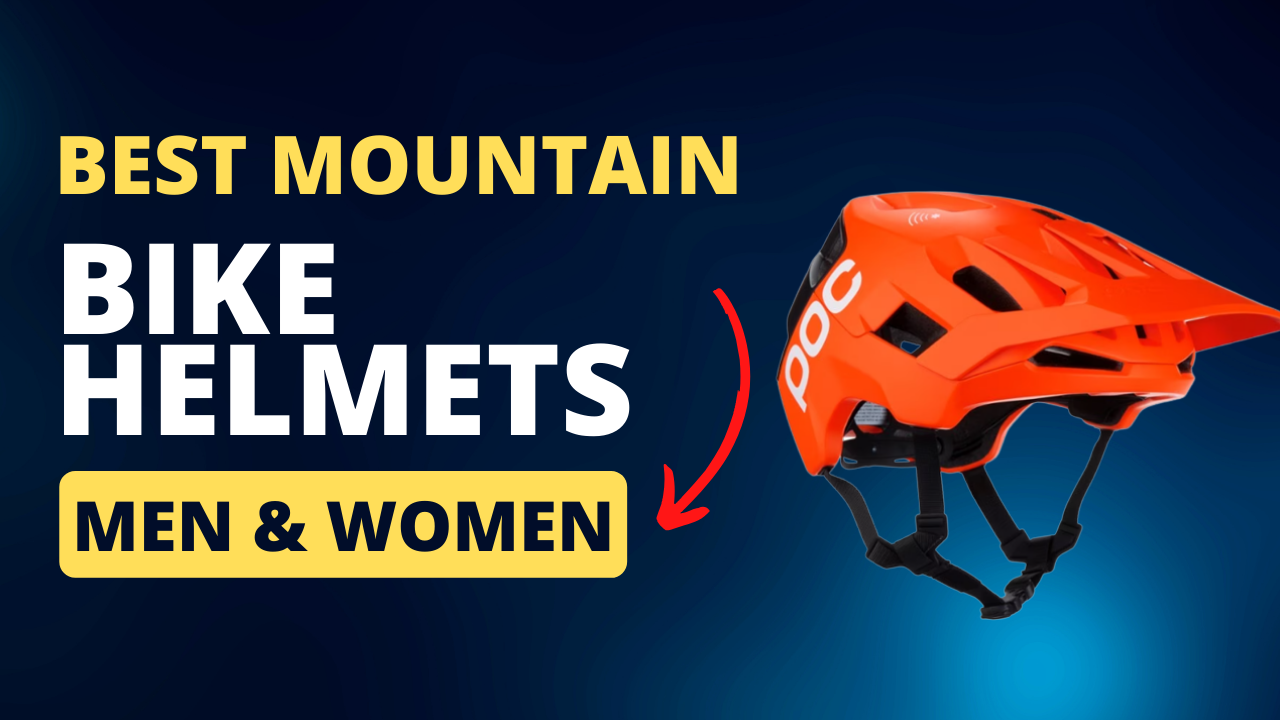
When it comes to hitting the trails and conquering rugged terrain on your mountain bike, safety should always be your top priority.
And nothing ensures your noggin's protection better than a high-quality mountain bike helmet. Whether you're a seasoned rider seeking the latest innovations or a newbie gearing up for your first adventure, our comprehensive guide has got you covered.
Join us as we explore the top contenders in the world of mountain bike helmets, each offering a blend of cutting-edge technology, comfort, and style, to keep you riding confidently and safely on any trail.
Top 3 Mountain Bike Helmets

#1st Rated
Smith Forefront 2
The Smith Forefront 2 MIPS bike helmet is a sleek and stylish helmet that offers superior protection and comfort for mountain bikers. It features a unique Koroyd material that absorbs impact better than foam, a MIPS system that reduces rotational forces on the brain, and a VaporFit system that adjusts to fit any head shape.
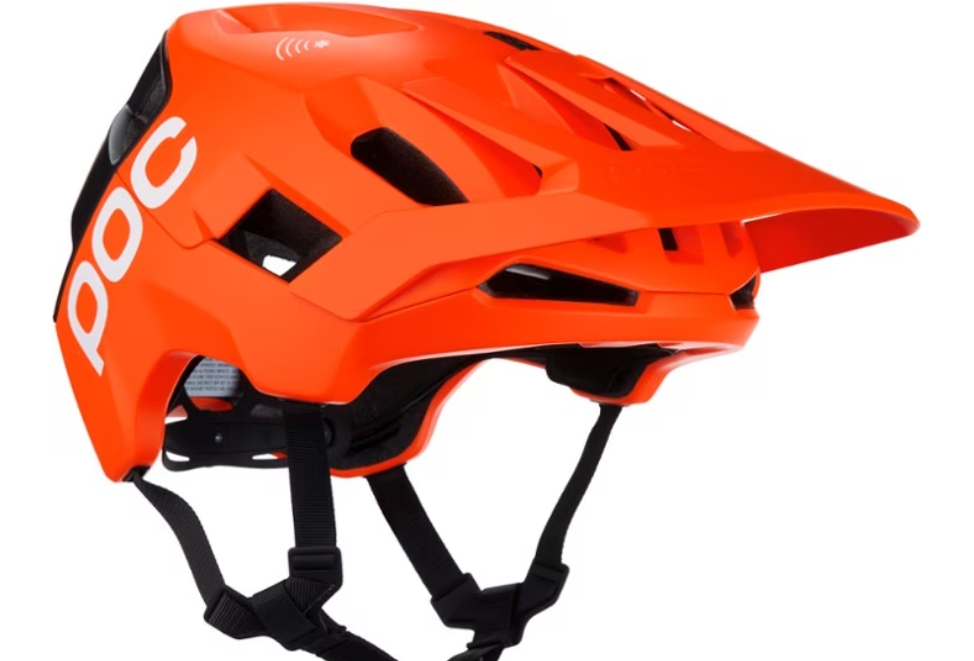
#2nd Rated
POC Kortal Race
The POC Kortal Race MIPS bike helmet is a great choice for riders who want a helmet that offers advanced protection, comfort, and technology. It has a modern look that sets it apart from other helmets, and it comes in six different colors to suit your taste.
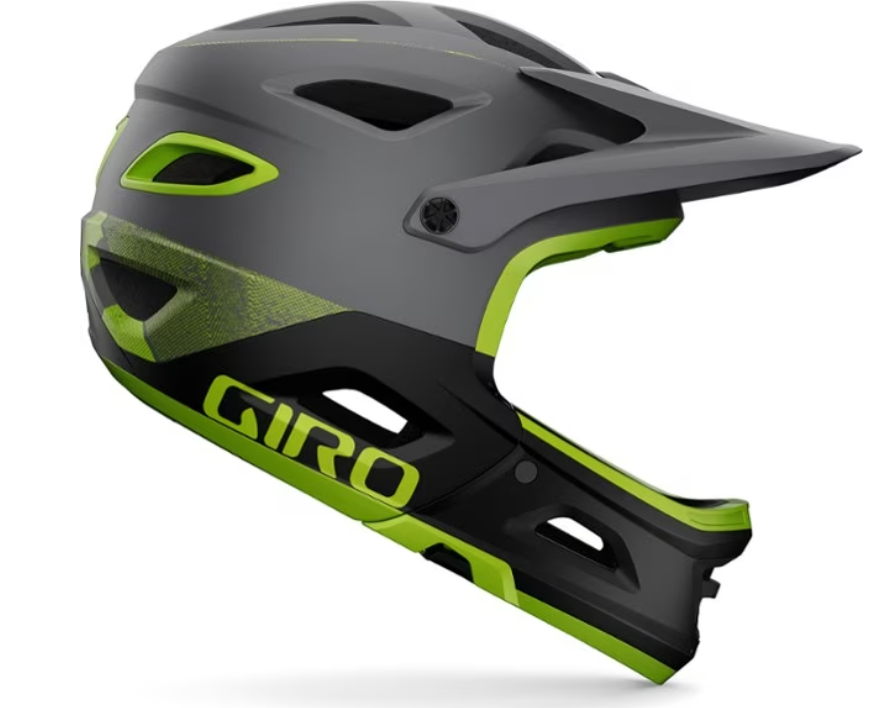
#3rd Rated
Giro Switchblade
The Giro Switchblade MIPS Bike Helmet is a versatile and durable helmet that can be used for downhill and enduro riding. It has a removable chinbar that allows you to switch between a full-face and a half-shell helmet, depending on your preference and the terrain.
1) Smith Forefront 2

The Smith Forefront 2 mountain bike helmet stands as an updated version of its predecessor, retaining a unique aesthetic but with several notable design improvements.
It sports a new vent layout alongside a slimmer and lower profile, which departs slightly from its previous space-age look, offering a blend of style and function.
The in-moulded shell of the helmet envelops it entirely, providing a robust layer that's geared to withstand the bumps and bashes synonymous with everyday use, bolstered by the use of Koroyd material in its construction.
The Forefront 2 doesn't just prioritize safety but also comfort and fit, as illustrated by its quality visor that adjusts well for clear vision, and the padding that covers all key points ensuring a snug fit.
Despite its lightweight nature and innovative safety technology, it has received some criticism for sub-par ventilation and its relatively high price point, but it nevertheless stands as one of the more safety feature-rich helmets in the market.
Safety Standards
The Smith Forefront 2 bike helmet is a high-end helmet that meets or exceeds all major safety standards, including:
- CPSC: The U.S. Consumer Product Safety Commission (CPSC) sets the minimum safety standards for bike helmets sold in the United States. The Smith Forefront 2 meets or exceeds all CPSC requirements.
- CE EN 1078: This is the European standard for bike helmets. The Smith Forefront 2 also meets or exceeds all CE EN 1078 requirements.
In addition to meeting these minimum safety standards, the Smith Forefront 2 incorporates a number of advanced safety features, including:
- Koroyd: Koroyd is a honeycomb-shaped material that is used to absorb energy in the event of an impact. It is lightweight and breathable, making it ideal for use in bike helmets.
- MIPS: MIPS stands for Multi-directional Impact Protection System. It is a liner that is designed to reduce rotational forces on the brain in the event of an angled impact. Rotational forces are thought to be a major cause of concussions and other brain injuries.
- Integrated skeletal structure: The Smith Forefront 2 has an integrated skeletal structure that provides additional strength and impact protection.
Overall, the Smith Forefront 2 is a very safe bike helmet. It meets or exceeds all major safety standards and incorporates a number of advanced safety features.
Fit
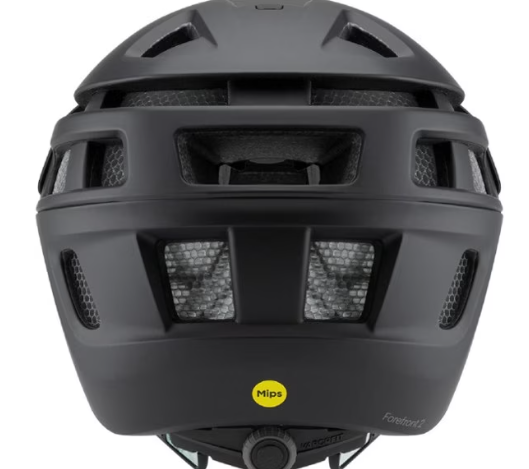
The Smith Forefront 2 bike helmet has a snug, comfortable fit. It is designed to sit level on your head and low on your forehead, with the front edge approximately one to two finger-widths above your eyebrows. The helmet should also be centered on your head, with the side straps forming a "V" shape under and slightly in front of your ears.
The Forefront 2 has a number of features that help to ensure a good fit, including:
- VaporFit dial adjustment system: This system allows you to adjust the fit of the helmet with a turn of a dial. It is located at the back of the helmet and provides 270-degree fit adjustment.
- Cradle system: The cradle system is a cradle-like structure that sits inside the helmet and cradles your head. It is height-adjustable, with three positions to tailor the fit.
- Ionic+ antimicrobial lining: The Ionic+ antimicrobial lining is soft and comfortable against the skin. It is also sweat-activated and helps to control odor.
Retention System
The Smith Forefront 2 bike helmet uses a retention system called the VaporFit dial adjustment system. This system allows you to adjust the fit of the helmet with a turn of a dial. It is located at the back of the helmet and provides 270-degree fit adjustment.
The VaporFit system works by using a series of cables that are connected to the helmet's cradle system. When you turn the dial, the cables tighten or loosen, which adjusts the fit of the cradle system and the helmet.
The VaporFit system is very easy to use and allows you to make precise adjustments to the fit of your helmet. It is also very durable and should not loosen or wear out over time.
In addition to the VaporFit dial adjustment system, the Smith Forefront 2 helmet also has a number of other features that contribute to its retention system, including:
- Cradle system: The cradle system is a cradle-like structure that sits inside the helmet and cradles your head. It is height-adjustable, with three positions to tailor the fit.
- Side straps: The side straps are adjustable and help to keep the helmet in place on your head.
- Chin strap: The chin strap is adjustable and helps to keep the helmet from coming off of your head in the event of a crash.
All of of these features work together to create a retention system that is both secure and comfortable. The Smith Forefront 2 helmet is a great choice for riders who are looking for a helmet with a secure fit.
Ventilation
The Smith Forefront 2 bike helmet has a well-designed ventilation system that helps to keep your head cool and comfortable, even on hot days. The helmet has 20 vents, including 3 large vents at the front of the helmet. The vents are strategically placed to allow air to flow freely through the helmet, even when you are riding at high speeds.
The Forefront 2 also has a number of features that help to improve ventilation, including:
- Koroyd: Koroyd is a honeycomb-shaped material that is used to absorb energy in the event of an impact. It is also very breathable, which helps to improve ventilation.
- AirEvac ventilation system: The AirEvac ventilation system integrates with Smith goggles and eyewear to help keep fog from building up.
- Sweat-activated padding: The sweat-activated padding helps to wick away sweat and keep your head cool and dry.
Overall, the Smith Forefront 2 has a very effective ventilation system that helps to keep your head cool and comfortable, even on hot days. This is important for both performance and safety, as it can help to prevent you from overheating and becoming dehydrated.
Visor
The Smith Forefront 2 bike helmet has a three-position adjustable visor. The visor is made of a durable polycarbonate material and is designed to protect your eyes from the sun, rain, and other debris.
The visor can be adjusted to three different positions:
- High: This position is ideal for use with goggles or sunglasses. It allows you to flip the visor up out of your way when you are not using it.
- Middle: This position is a good all-around position. It provides some protection from the sun and rain, but it does not obstruct your vision.
- Low: This position is ideal for riding in bright sunlight. It provides maximum protection from the sun, but it can also slightly obstruct your vision.
The visor is easy to adjust with one hand. It is also removable, so you can clean it or replace it if it gets damaged.
Weight

The Smith Forefront 2 bike helmet weighs 13.4 ounces (380 grams) in a size medium. This is a relatively average weight for a high-end trail helmet. The helmet's weight is evenly distributed, and it does not feel bulky or heavy on the head.
The weight of a bike helmet is an important factor to consider, especially if you are planning on doing long rides or climbing a lot of hills. A heavier helmet can put strain on your neck and shoulders, and it can also make you feel more tired.
However, it is important to note that the weight of a helmet is not the only factor to consider when choosing one. You should also consider the helmet's fit, ventilation, and safety features.
The Smith Forefront 2 is a great choice for riders who are looking for a lightweight and comfortable helmet with excellent safety features.
Material
The outer shell of the Smith Forefront 2 bike helmet is made of acrylonitrile butadiene styrene (ABS). ABS is a lightweight and durable thermoplastic material that is commonly used in a wide variety of products, including bike helmets.
ABS is a good choice for bike helmet shells because it is strong and impact-resistant. It is also relatively lightweight, which helps to keep the helmet comfortable to wear.
In addition to ABS, the Smith Forefront 2 helmet also uses a material called Koroyd. Koroyd is a honeycomb-shaped material that is used to absorb energy in the event of an impact. It is also very breathable, which helps to improve ventilation.
The Koroyd material is used in the helmet's shell to provide additional impact protection. It is also used in the helmet's ventilation system to help keep your head cool and comfortable.
Overall, the Smith Forefront 2 bike helmet has a well-designed and durable shell. The ABS and Koroyd materials work together to provide excellent impact protection and ventilation.
Comfort And Padding
The Smith Forefront 2 bike helmet uses a comfort padding system called the Ionic+ antimicrobial lining. This lining is made of a soft and breathable material that is designed to wick away sweat and keep your head cool and dry.
The Ionic+ lining is also antimicrobial, which helps to prevent the growth of bacteria and odor. This is important for keeping your helmet fresh and comfortable, even on long rides.
The comfort padding in the Smith Forefront 2 helmet is also adjustable. The cradle system has three height positions, which allows you to customize the fit of the helmet and the padding.
Overall, the Smith Forefront 2 bike helmet has a very comfortable padding system. The Ionic+ antimicrobial lining is soft, breathable, and odor-resistant. The cradle system is also adjustable, which allows you to customize the fit of the helmet and the padding.
2) POC Kortal Race Mips Bike Helmet

The POC Kortal Race Mips Bike Helmet is praised across the board for its strong emphasis on safety and protection, being lauded as one of the most protective helmets on the market due to its well-integrated safety features, including the MIPS Integra system and an NFC medical id chip.
Beyond safety, it excels in comfort, ventilation, and design, packaging a serious amount of safety tech into a comfortable and decently ventilated helmet, with a clean design that stays true to its Swedish roots, making it a top choice for riders.
However, it's noted that the added protection may impact glasses compatibility and the fit may be somewhat narrow for some users, but it's highly recommended for those in search of a safe, stylish, and performance-oriented helmet
Safety Standards
The POC Kortal Race MIPS Bike Helmet is certified to the following safety standards:
- CPSC 1203: This is the US Consumer Product Safety Commission's standard for bicycle helmets. It tests helmets for impact resistance and penetration resistance.
- CE EN1078: This is the European standard for bicycle helmets. It tests helmets for impact resistance and penetration resistance, as well as for field of vision and comfort.
- AS/NZS 2063: This is the Australian and New Zealand standard for bicycle helmets. It tests helmets for impact resistance and penetration resistance, as well as for field of vision and comfort.
- NTA 8776: This is the Dutch standard for bicycle helmets, and it is the only standard in the world that specifically tests helmets for use on e-bikes. The NTA 8776 standard is more rigorous than other standards, and it tests helmets at higher impact speeds.
In addition to these safety certifications, the POC Kortal Race MIPS Bike Helmet also features a number of other safety features, including:
- MIPS Integra: MIPS Integra is a low-profile rotational impact protection system that is integrated into the helmet's liner. MIPS Integra helps to reduce the risk of brain injuries caused by rotational impacts.
- Breakaway visor: The visor on the POC Kortal Race MIPS Bike Helmet is designed to breakaway in the event of a crash. This helps to reduce the risk of neck injuries.
- RECCO® Reflector: The POC Kortal Race MIPS Bike Helmet features a RECCO® Reflector, which helps rescue services to easily and quickly locate you in the event of an emergency.
Overall, the POC Kortal Race MIPS Bike Helmet is one of the safest bicycle helmets on the market. It is certified to all major safety standards, and it features a number of other safety features that help to protect your head in the event of a crash.
Fit
The POC Kortal Race MIPS Bike Helmet is designed to fit a wide range of head shapes and sizes. It features a 360° adjustment system that allows you to customize the fit for your head. The helmet also has a number of other features that help to ensure a snug and comfortable fit, including:
- Adjustable straps: The straps on the POC Kortal Race MIPS Bike Helmet are adjustable, so you can get a secure fit under your chin.
- Goggle compatibility: The helmet is compatible with goggles, and it features a goggle dock that helps to keep your goggles in place.
- Breakaway visor: The visor on the POC Kortal Race MIPS Bike Helmet is designed to breakaway in the event of a crash, which helps to reduce the risk of neck injuries.
Overall, the POC Kortal Race MIPS Bike Helmet is designed to fit snugly but comfortably. It is important to try on a helmet before you buy it, to make sure that it fits you properly.
Retention System

The POC Kortal Race MIPS Bike Helmet uses a 360° adjustment system to keep the helmet in place on your head. The system consists of a dial on the back of the helmet and a series of straps that wrap around your head.
To adjust the fit of the helmet, simply turn the dial on the back of the helmet. This will tighten or loosen the straps around your head. You can also adjust the straps individually to get a more customized fit.
The POC Kortal Race MIPS Bike Helmet also has a number of other features that help to keep the helmet in place, including:
- Goggle compatibility: The helmet is compatible with goggles, and it features a goggle dock that helps to keep your goggles in place.
- Breakaway visor: The visor on the POC Kortal Race MIPS Bike Helmet is designed to breakaway in the event of a crash, which helps to reduce the risk of neck injuries.
Overall, the POC Kortal Race MIPS Bike Helmet has a very effective retention system that will keep the helmet in place on your head, even during the most demanding riding conditions.
Ventilation
The POC Kortal Race MIPS Bike Helmet has 17 vents, which provide excellent ventilation. The vents are located strategically throughout the helmet, and they are designed to channel air over your head to keep you cool and comfortable, even on hot days.
The helmet also has a number of other features that help to improve ventilation, including:
- Deep front-to-back air channels: The deep front-to-back air channels on the POC Kortal Race MIPS Bike Helmet help to move air through the helmet and over your head.
- Goggle compatibility: The helmet is compatible with goggles, and it features a goggle dock that helps to keep your goggles in place without blocking any of the vents.
- Breakaway visor: The breakaway visor on the POC Kortal Race MIPS Bike Helmet is designed to breakaway in the event of a crash, which helps to prevent it from blocking any of the vents.
Overall, the POC Kortal Race MIPS Bike Helmet has excellent ventilation. It is ideal for riders who want a helmet that will keep them cool and comfortable, even on the hottest days.
Visor
The POC Kortal Race MIPS Bike Helmet has a breakaway visor that is designed to protect your eyes from the sun, rain, mud, and tree branches. The visor is also designed to breakaway in the event of a crash, which helps to reduce the risk of neck injuries.
The visor is made of a durable plastic material that is resistant to scratches and impacts. It is also adjustable, so you can position it to suit your needs.
The visor on the POC Kortal Race MIPS Bike Helmet is a great safety feature that can help to protect your eyes and reduce the risk of injury in the event of a crash.
Weight
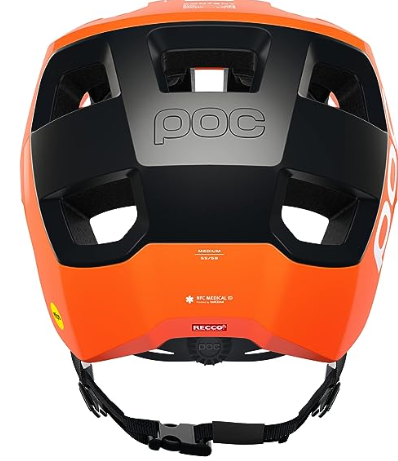
The POC Kortal Race MIPS Bike Helmet weighs 13.7 ounces (size XS/S), 14.4 ounces (size S/M), and 15.2 ounces (size M/L). This makes it a relatively lightweight helmet, especially considering the level of protection it offers.
The weight of a bike helmet is an important consideration, as a heavy helmet can be uncomfortable to wear and can cause neck fatigue. However, it is also important to consider the level of protection that a helmet offers when choosing a weight. The POC Kortal Race MIPS Bike Helmet offers a high level of protection, while still being relatively lightweight.
Material
The outer shell of the POC Kortal Race MIPS Bike Helmet is made of polycarbonate (PC). PC is a lightweight and durable plastic material that is commonly used in a variety of applications, including bike helmets. It is resistant to impacts, scratches, and abrasions.
PC is also a good insulator, which helps to keep your head cool and comfortable on hot days. It is also UV resistant, which helps to protect your head from the sun's harmful UV rays.
The POC Kortal Race MIPS Bike Helmet also features a unibody shell construction. This means that the shell is made from a single piece of plastic, which makes it stronger and more durable than a shell that is made from multiple pieces.
Overall, the polycarbonate unibody shell on the POC Kortal Race MIPS Bike Helmet is a lightweight, durable, and protective material that will help to keep your head safe in the event of a crash.
Comfort And Padding
The POC Kortal Race MIPS Bike Helmet uses a one-piece comfort padding system. The padding is made from a soft and breathable material that is designed to keep your head cool and comfortable, even on long rides. The padding is also moisture-wicking, so it will help to keep your head dry and sweat-free.
The padding is strategically placed around the helmet to provide the most comfort and protection possible. It is thicker in the areas where your head is most likely to come into contact with the helmet, such as the forehead, temples, and back of the head. The padding is also perforated to allow for airflow and ventilation.
The POC Kortal Race MIPS Bike Helmet also features a goggle dock that helps to keep your goggles in place without putting any pressure on your face. The goggle dock is padded to improve comfort and reduce chafing.
Overall, the comfort padding on the POC Kortal Race MIPS Bike Helmet is excellent. It is soft, breathable, and moisture-wicking, and it is strategically placed to provide the most comfort and protection possible.
3) Giro Switchblade MIPS Bike Helmet

The Giro Switchblade MIPS Bike Helmet is appreciated for its versatility as it easily converts between a full-face and open-face helmet, making it suitable for various terrains and biking styles.
The helmet is equipped with a secure, easily attachable or removable chin bar, facilitating the switch between full-face for descents and open-face for trail riding, although it's noted to be heavier than some modern enduro-specific lightweight full-face helmets which might deter some riders.
It holds an ASTM downhill certification which signifies a high level of protection, especially with the addition of a removable chin-bar that allows riders to easily switch between full- and half-shell modes.
Despite being lighter than most full-face helmets and having better ventilation with 20 vent holes, it's mentioned that, like other full-face helmets, it can still get sweaty.
Safety Standards
The Giro Switchblade MIPS Bike Helmet is certified to the following safety standards:
- CPSC 1203: This is the US Consumer Product Safety Commission's standard for bicycle helmets. It tests helmets for impact resistance and penetration resistance.
- CE EN1078: This is the European standard for bicycle helmets. It tests helmets for impact resistance and penetration resistance, as well as for field of vision and comfort.
- AS/NZS 2063: This is the Australian and New Zealand standard for bicycle helmets. It tests helmets for impact resistance and penetration resistance, as well as for field of vision and comfort.
- ASTM-1952 DH: This is the US ASTM International's standard for downhill mountain bike helmets. It is the most rigorous standard for bicycle helmets, and it tests helmets for impact resistance and penetration resistance at higher speeds than other standards.
In addition to these safety certifications, the Giro Switchblade MIPS Bike Helmet also features a number of other safety features, including:
- MIPS: The Giro Switchblade MIPS Bike Helmet features MIPS (Multi-directional Impact Protection System), which is a low-profile rotational impact protection system that is integrated into the helmet's liner. MIPS helps to reduce the risk of brain injuries caused by rotational impacts.
- Removable chin bar: The Giro Switchblade MIPS Bike Helmet has a removable chin bar, which makes it versatile enough for both climbing and descending. The chin bar is easy to remove and install, and it can be removed without having to take off the helmet.
- Roc Loc Air DH fit system: The Giro Switchblade MIPS Bike Helmet features the Roc Loc Air DH fit system, which provides a secure and comfortable fit. The fit system is also adjustable, so you can get the perfect fit for your head.
Overall, the Giro Switchblade MIPS Bike Helmet is one of the safest bicycle helmets on the market. It is certified to all major safety standards, and it features a number of other safety features that help to protect your head in the event of a crash.
Fit
The Giro Switchblade MIPS Bike Helmet is designed to fit a wide range of head shapes and sizes. It features the Roc Loc Air DH fit system, which allows you to customize the fit for your head. The system consists of a dial on the back of the helmet and a series of straps that wrap around your head.
To adjust the fit of the helmet, simply turn the dial on the back of the helmet. This will tighten or loosen the straps around your head. You can also adjust the straps individually to get a more customized fit.
The Giro Switchblade MIPS Bike Helmet also has a number of other features that help to ensure a snug and comfortable fit, including:
- Removable chin bar: The removable chin bar on the Giro Switchblade MIPS Bike Helmet allows you to adjust the fit of the helmet to your needs. If you are climbing, you can remove the chin bar to make the helmet lighter and more breathable. If you are descending, you can attach the chin bar for additional protection.
- Goggle compatibility: The Giro Switchblade MIPS Bike Helmet is compatible with goggles, and it features a goggle dock that helps to keep your goggles in place.
- Visor: The visor on the Giro Switchblade MIPS Bike Helmet is adjustable, so you can position it to suit your needs.
Overall, the Giro Switchblade MIPS Bike Helmet is designed to fit snugly but comfortably. It is important to try on a helmet before you buy it, to make sure that it fits you properly.
Retention System
The Giro Switchblade MIPS Bike Helmet uses the Roc Loc Air DH fit system. The system consists of a dial on the back of the helmet and a series of straps that wrap around your head.
To adjust the fit of the helmet, simply turn the dial on the back of the helmet. This will tighten or loosen the straps around your head. You can also adjust the straps individually to get a more customized fit.
The Roc Loc Air DH fit system is one of the most advanced retention systems on the market. It provides a secure and comfortable fit, even during the most demanding riding conditions. The system is also adjustable, so you can get the perfect fit for your head.
Ventilation
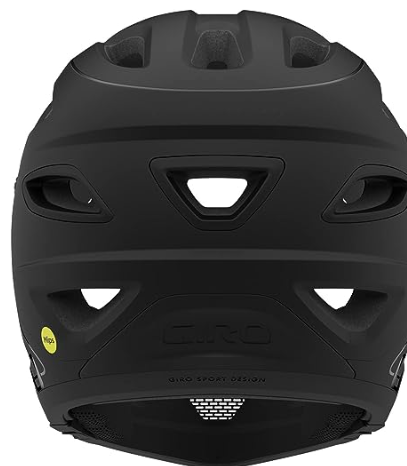
The Giro Switchblade MIPS Bike Helmet has a total of 20 vents, which provide excellent ventilation. The vents are located strategically throughout the helmet, and they are designed to channel air over your head to keep you cool and comfortable, even on hot days.
The helmet also has a number of other features that help to improve ventilation, including:
- Deep front-to-back air channels: The deep front-to-back air channels on the Giro Switchblade MIPS Bike Helmet help to move air through the helmet and over your head.
- Removable chin bar: The removable chin bar on the Giro Switchblade MIPS Bike Helmet allows you to adjust the ventilation of the helmet to your needs. If you are climbing, you can remove the chin bar to make the helmet lighter and more breathable. If you are descending, you can attach the chin bar for additional protection.
- Visor: The visor on the Giro Switchblade MIPS Bike Helmet is adjustable, so you can position it to allow for maximum airflow.
Visor
The Giro Switchblade MIPS Bike Helmet has an adjustable visor that is designed to protect your eyes from the sun, rain, mud, and tree branches. The visor is also designed to be compatible with goggles, so you can wear them without any problems.
The visor on the Giro Switchblade MIPS Bike Helmet is made of a durable plastic material that is resistant to scratches and impacts. It is also adjustable, so you can position it to suit your needs.
Here are some of the features of the visor on the Giro Switchblade MIPS Bike Helmet:
- Adjustable: The visor can be adjusted to different positions to suit your needs.
- Compatible with goggles: The visor is designed to be compatible with goggles, so you can wear them without any problems.
- Durable: The visor is made of a durable plastic material that is resistant to scratches and impacts.
Overall, the visor on the Giro Switchblade MIPS Bike Helmet is a great safety feature that can help to protect your eyes and reduce the risk of injury in the event of a crash.
Weight
The Giro Switchblade MIPS Bike Helmet weighs 34.6 ounces (size M) with the chin bar attached. With the chin bar removed, the helmet weighs 24.2 ounces.
This makes it a relatively lightweight helmet, especially considering the level of protection it offers. The chin bar is one of the heaviest components of a full-face helmet, so removing it can significantly reduce the weight of the helmet.
The weight of a bike helmet is an important consideration, as a heavy helmet can be uncomfortable to wear and can cause neck fatigue. However, it is also important to consider the level of protection that a helmet offers when choosing a weight. The Giro Switchblade MIPS Bike Helmet offers a high level of protection, while still being relatively lightweight.
Material
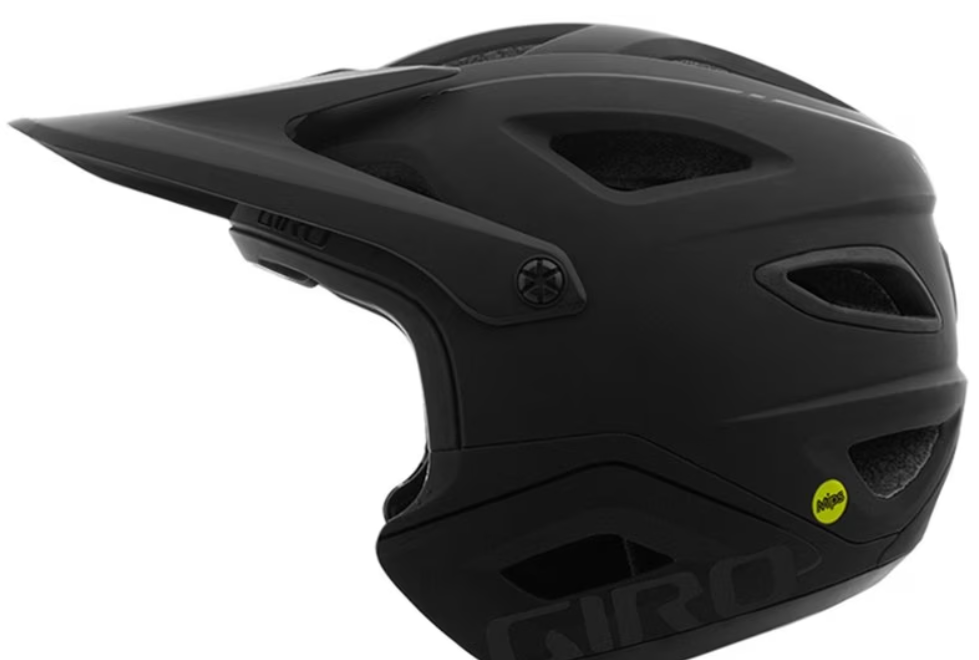
The shell of the Giro Switchblade MIPS Bike Helmet is made of polycarbonate (PC). PC is a lightweight and durable plastic material that is commonly used in a variety of applications, including bike helmets. It is resistant to impacts, scratches, and abrasions.
PC is also a good insulator, which helps to keep your head cool and comfortable on hot days. It is also UV resistant, which helps to protect your head from the sun's harmful UV rays.
The Giro Switchblade MIPS Bike Helmet also features a unibody shell construction. This means that the shell is made from a single piece of plastic, which makes it stronger and more durable than a shell that is made from multiple pieces.
Comfort And Padding
The Giro Switchblade MIPS Bike Helmet uses a soft, breathable, and moisture-wicking comfort padding system. The padding is strategically placed around the helmet to provide the most comfort and protection possible. It is thicker in the areas where your head is most likely to come into contact with the helmet, such as the forehead, temples, and back of the head. The padding is also perforated to allow for airflow and ventilation.
The Giro Switchblade MIPS Bike Helmet also features a goggle dock that helps to keep your goggles in place without putting any pressure on your face. The goggle dock is padded to improve comfort and reduce chafing.
Overall, the comfort padding on the Giro Switchblade MIPS Bike Helmet is excellent. It is soft, breathable, and moisture-wicking, and it is strategically placed to provide the most comfort and protection possible.
4) Troy Lee Designs A3 Uno Mips Bike Helmet
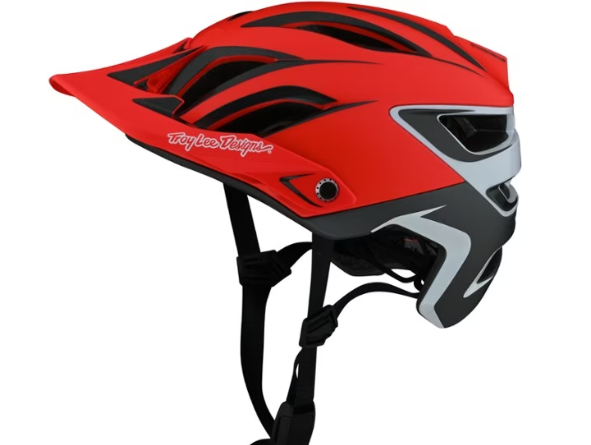
The Troy Lee Designs A3 Uno Mips Bike Helmet is lauded for its rider-friendly features and substantial coverage, albeit at a premium price point.
Building on the legacy of its predecessors, the A3 enhances safety with its dual-density foam and a B-Series MIPS liner, which have collectively merited a 5-Star Virginia Tech helmet safety rating.
The helmet is not only recognized for its protection but also its innovative design, boasting a refined shape with a magnetic visor and clasp, and a comfortable, skull-hugging rear profile that enhances its appeal for trail riding enthusiasts.
Safety Standards
The Troy Lee Designs A3 Uno Bike Helmet has been tested and certified to meet the following safety standards:
- CPSC 1203: This is the mandatory safety standard for bicycle helmets in the United States. It requires helmets to meet certain performance requirements, including impact resistance, penetration resistance, and retention system strength.
- CE EN1078: This is the mandatory safety standard for bicycle helmets in the European Union. It requires helmets to meet similar performance requirements to the CPSC standard, but also includes additional requirements for ventilation and field of vision.
- ASTM F1952: This is a voluntary safety standard for downhill mountain bike helmets. It requires helmets to meet more stringent impact resistance requirements than the CPSC and CE standards.
In addition to meeting these safety standards, the Troy Lee Designs A3 Uno Bike Helmet has also received a 5-star rating from the Virginia Tech Helmet Lab. This is the highest possible safety rating from the Virginia Tech Helmet Lab, and it indicates that the A3 Uno helmet is an excellent choice for mountain bikers of all levels.
The A3 Uno Bike Helmet features a number of safety features, including:
- MIPS (Multi-directional Impact Protection System): MIPS is a technology that is designed to reduce rotational forces on the brain in the event of a crash. It works by using a low-friction liner that allows the helmet to rotate slightly relative to the head, which helps to absorb and redirect rotational forces.
- 3-piece shell: The 3-piece shell is designed to provide superior impact protection. It is made up of a durable outer shell, a softer inner shell, and a MIPS liner.
- Fidlock magnetic buckle: The Fidlock magnetic buckle is easy to use and provides a secure fit. It is also quick to release in the event of a crash.
Overall, the Troy Lee Designs A3 Uno Bike Helmet is a very safe helmet that meets all of the major safety standards. It is also well-ventilated and comfortable to wear, making it a great choice for mountain bikers of all levels.
Fit
The Troy Lee Designs A3 Uno Bike Helmet is designed to fit snugly but comfortably on your head. It should sit level on your head and low on your forehead, about one or two finger-widths above your eyebrows. The side straps should form a "V" shape under your ears, and the chin strap should be snug enough to stay in place without being too tight.
The A3 Uno helmet comes in a variety of sizes to fit most adults and children. To determine your size, measure the circumference of your head just above your eyebrows and ears. You can use a fabric tape measure or a string. Once you have your measurement, consult the Troy Lee Designs sizing chart to find your correct size.
If you are unsure of your size, it is always best to try on a helmet before you buy it. You should be able to wiggle the helmet back and forth slightly, but it should not move around excessively. The helmet should also feel comfortable and not cause any pressure points.
Retention System
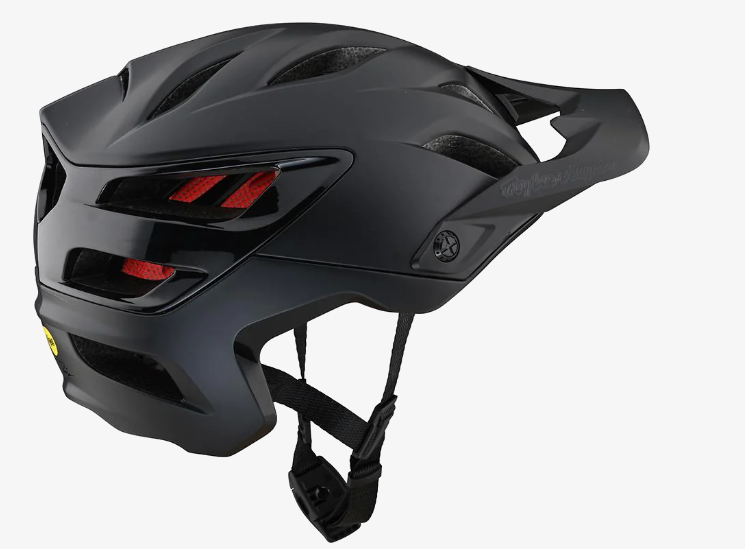
The Troy Lee Designs A3 Uno Bike Helmet uses a 360° retention system to keep it securely on your head. This system consists of a MIPS liner and a retention cradle. The MIPS liner is a low-friction liner that allows the helmet to rotate slightly relative to the head in the event of a crash, which helps to absorb and redirect rotational forces. The retention cradle is a system of adjustable straps that wrap around the head and tighten to create a secure fit.
The retention cradle on the A3 Uno helmet is designed to be comfortable and easy to use. It features wide grip arms that are cantilevered so they have built in suspension on the surface area of your head. This helps to distribute the pressure evenly and prevents the helmet from feeling too tight. The retention cradle also features a Fidlock magnetic buckle, which is easy to use and provides a secure fit.
To adjust the retention system on the A3 Uno helmet, simply turn the dial at the back of the helmet. This will tighten or loosen the straps. You can also adjust the position of the side straps and chin strap to achieve a comfortable and secure fit.
The 360° retention system on the Troy Lee Designs A3 Uno Bike Helmet is one of the most advanced and effective retention systems on the market. It is designed to keep the helmet securely on your head in the event of a crash, while also being comfortable and easy to use.
Ventilation
The Troy Lee Designs A3 Uno Bike Helmet has a total of 16 vents, making it one of the most ventilated half-shell helmets on the market. The vents are strategically placed to maximize airflow and keep your head cool and comfortable, even on the hottest days.
The vents on the A3 Uno helmet are also designed to work together to create a channeling system that helps to direct air through the helmet and away from your head. This helps to keep your head cool and dry, even when you are sweating heavily.
In addition to the vents, the A3 Uno helmet also has a sweat wicking liner that helps to absorb and evaporate sweat. This helps to keep your head cool and comfortable, even on long rides.
Overall, the Troy Lee Designs A3 Uno Bike Helmet has an excellent ventilation system that will help you stay cool and comfortable on even the hottest days.
Here are some additional benefits of the A3 Uno helmet's ventilation system:
- Reduced fatigue: When you are cool and comfortable, you are less likely to fatigue. This can help you to ride longer and stronger.
- Improved performance: When you are not overheated, you can focus on your riding and perform at your best.
- Increased safety: A well-ventilated helmet can help to reduce your risk of heatstroke and dehydration, which can lead to impaired judgment and decision-making.
If you are looking for a helmet that will keep you cool and comfortable on even the hottest days, the Troy Lee Designs A3 Uno Bike Helmet is a great option.
Visor
The Troy Lee Designs A3 Uno Bike Helmet comes with a removable visor that is designed to protect your eyes from the sun, rain, and other debris. The visor is made of a durable polycarbonate material that is resistant to impacts and scratches. It is also UV-protected to help protect your eyes from harmful UV rays.
The visor on the A3 Uno helmet is adjustable, so you can position it exactly where you want it. It is also easy to remove and install, so you can take it off when you are not riding or if you need to clean it.
Here are some additional benefits of the A3 Uno helmet's visor:
- Improved visibility: The visor can help to improve your visibility by blocking out the sun's glare and other debris. This can be especially helpful when riding in low-light conditions or on trails with a lot of trees and branches.
- Reduced eye strain: The visor can help to reduce eye strain by blocking out the sun's harmful UV rays. This can help you to ride longer and stronger without getting tired eyes.
- Increased safety: The visor can help to protect your eyes from injuries caused by impacts from branches, rocks, and other debris.
Overall, the visor on the Troy Lee Designs A3 Uno Bike Helmet is a valuable addition that can help to improve your visibility, reduce eye strain, and increase your safety.
Weight
The Troy Lee Designs A3 Uno Bike Helmet weighs approximately 360 grams (12.6 ounces) in a medium size. This makes it one of the lightest half-shell helmets on the market. The lightweight design of the A3 Uno helmet helps to reduce fatigue and improve performance, especially on long rides.
The lightweight design of the A3 Uno helmet is achieved through a number of factors, including:
The use of lightweight materials, such as EPS foam and polycarbonate plastic.
The efficient design of the helmet's shell and ventilation system.
The use of a Fidlock magnetic buckle, which is lighter and easier to use than traditional buckles.
The lightweight design of the Troy Lee Designs A3 Uno Bike Helmet is a major benefit for mountain bikers of all levels. It helps to reduce fatigue, improve performance, and make the helmet more comfortable to wear on long rides.
Material

The shell of the Troy Lee Designs A3 Uno Bike Helmet is made of an advanced layering 3-piece shell. This shell consists of a durable outer shell, a softer inner shell, and a MIPS liner.
The outer shell of the A3 Uno helmet is made of a polycarbonate material. Polycarbonate is a strong and durable material that is resistant to impacts and scratches. It is also UV-protected to help protect your head from harmful UV rays.
The inner shell of the A3 Uno helmet is made of an EPS foam material. EPS foam is a lightweight and absorbent material that is designed to absorb impact energy in the event of a crash.
The MIPS liner is a low-friction liner that is designed to reduce rotational forces on the brain in the event of a crash. It works by allowing the helmet to rotate slightly relative to the head, which helps to absorb and redirect rotational forces.
The 3-piece shell design of the Troy Lee Designs A3 Uno Bike Helmet provides superior impact protection. It is also lightweight and comfortable to wear.
Here are some additional benefits of the A3 Uno helmet's 3-piece shell:
- Durability: The polycarbonate outer shell is very durable and resistant to impacts and scratches.
- Impact protection: The EPS foam inner shell is designed to absorb impact energy in the event of a crash.
- Rotational force protection: The MIPS liner is designed to reduce rotational forces on the brain in the event of a crash.
- Lightweight: The 3-piece shell is lightweight and comfortable to wear.
Overall, the 3-piece shell of the Troy Lee Designs A3 Uno Bike Helmet is a major safety feature that provides excellent impact protection and rotational force protection.
Comfort And Padding
The Troy Lee Designs A3 Uno Bike Helmet has a comfortable Ionic® comfort liner. The liner is made of a soft and breathable material that wicks away sweat and keeps your head cool and dry. The liner is also removable and washable, so you can keep it clean and fresh.
In addition to the comfort liner, the A3 Uno helmet also has a number of other features that contribute to its overall comfort:
- The helmet's shell is designed to fit snugly but comfortably on your head. It should sit level on your head and low on your forehead, about one or two finger-widths above your eyebrows.
- The retention system is adjustable, so you can create a custom fit that is both secure and comfortable.
- The helmet has a number of vents that help to keep your head cool and comfortable, even on the hottest days.
- The helmet's visor is adjustable and removable, so you can customize it to your liking.
Overall, the Troy Lee Designs A3 Uno Bike Helmet is a very comfortable helmet to wear. It has a number of features that work together to create a helmet that is both secure and comfortable, even on long rides.
5) Smith Mainline MIPS Bike Helmet
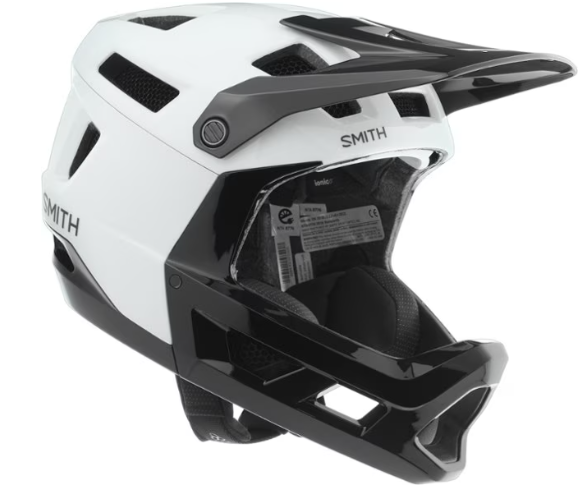
The Smith Mainline MIPS Bike Helmet has a lightweight construction, excellent breathability, and protective nature. It is specifically designed for aggressive riding, whether going big or fast, being a downhill certified enduro bike helmet with safety features such as KOROYD™ and Mips® for energy-absorbing impact protection, which instills confidence in riders to tackle challenging trails.
Furthermore, its full-face design accompanied by DH certification and a D-ring buckle not only enhances its ruggedness but also provides superior protection and comfort with an adjustable fit system.
Whether on smooth roads or rough trails, this helmet is well-regarded for its performance, although the price point, around $310, may be a deterrent for some.
Safety Features
The Smith Mainline MIPS Bike Helmet is a high-end mountain bike helmet that meets or exceeds the following safety standards:
- CPSC (United States Consumer Product Safety Commission)
- CE EN 1078 (European standard for bicycle helmets)
- ASTM F1952 (American Society for Testing and Materials standard for downhill mountain bike helmets)
- NTA-8776 (Dutch standard for e-bike helmets)
These standards are designed to ensure that bicycle helmets provide adequate protection in the event of a crash. The CPSC and CE EN 1078 standards require helmets to withstand a variety of impact tests, including frontal, rear, and side impacts. The ASTM F1952 standard is more rigorous and requires helmets to withstand more severe impacts, such as those that might occur in a downhill mountain bike crash. The NTA-8776 standard is specifically designed for e-bikes and requires helmets to withstand higher speeds.
In addition to meeting these safety standards, the Smith Mainline MIPS Bike Helmet also features a number of innovative safety technologies, including:
- Koroyd®: Koroyd® is a honeycomb-shaped material that is lightweight and energy-absorbing. It is used throughout the Mainline helmet to provide superior impact protection.
- MIPS®: MIPS (Multi-directional Impact Protection System) is a technology that helps to reduce rotational forces on the brain in the event of an angled impact. MIPS helmets have been shown to reduce the risk of concussion by up to 30%.
Overall, the Smith Mainline MIPS Bike Helmet is a very safe helmet that meets or exceeds all major safety standards. It is also packed with innovative safety technologies, such as Koroyd® and MIPS®, to provide even greater protection in the event of a crash.
Fit
The Smith Mainline MIPS Bike Helmet is designed to fit snugly but comfortably on the head. It should sit level on your head and low on your forehead, about one or two finger-widths above your eyebrows. The side straps should form a "V" shape under, and slightly in front of, your ears. The chin strap should be snug but not too tight, and it should allow you to open your mouth wide without the helmet moving up or down.
The Mainline helmet comes with a variety of different pad thicknesses, so you can customize the fit to your liking. If you find that the helmet is too tight or too loose, try adjusting the pads. You can also try a different size helmet if necessary.
Retention System
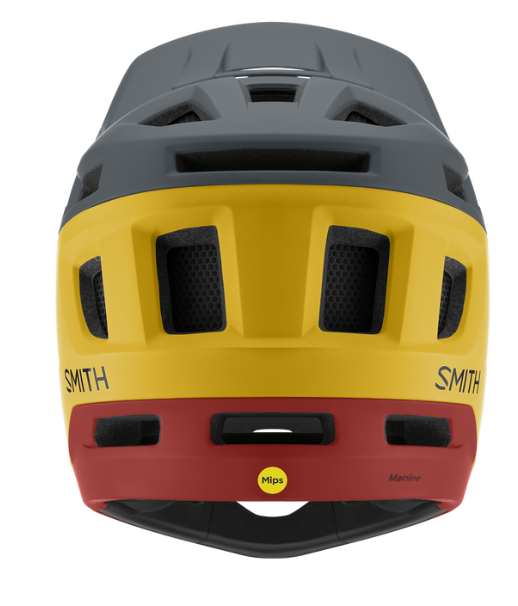
The Smith Mainline MIPS Bike Helmet uses a traditional two-strap retention system with a D-ring buckle. The side straps are adjustable and have a triangular shape that helps to keep the helmet in place. The chin strap is also adjustable and has a soft, padded lining to help prevent chafing.
To adjust the retention system on the Mainline helmet, simply loosen the side straps and the chin strap. Then, adjust the straps so that the helmet fits snugly but comfortably on your head. Tighten the side straps first, and then tighten the chin strap. Make sure that the helmet is level on your head and low on your forehead.
The D-ring buckle on the Mainline helmet is easy to use and provides a secure fit. To buckle the helmet, simply insert the tab on one side strap into the D-ring on the other side strap. Then, pull the tab tight and push it down to lock it in place. To unbuckle the helmet, simply press the tab down and pull it out of the D-ring.
The retention system on the Mainline helmet is effective and easy to use. It provides a secure fit that will help to keep the helmet in place in the event of a crash.
Ventilation
The Smith Mainline MIPS Bike Helmet has a very good ventilation system. It features 21 fixed vents that are strategically placed throughout the helmet to allow for maximum airflow. The vents are also lined with Koroyd®, which is a honeycomb-shaped material that is lightweight and breathable.
The ventilation system on the Mainline helmet is designed to keep your head cool and dry, even on hot days. The vents allow air to flow through the helmet and carry away heat and moisture. The Koroyd® lining also helps to keep your head cool by allowing air to circulate freely.
In addition to the 21 fixed vents, the Mainline helmet also has a number of other features that contribute to its good ventilation. For example, the helmet has a large air intake at the front and a large air exhaust at the back. This helps to create a through-flow of air through the helmet.
The Mainline helmet also has a number of smaller vents throughout the helmet. These vents help to distribute airflow evenly throughout the helmet and prevent hot spots from developing.
Overall, the Smith Mainline MIPS Bike Helmet has a very good ventilation system. The 21 fixed vents, the Koroyd® lining, and the other ventilation features work together to keep your head cool and dry, even on hot days.
Visor
The Smith Mainline MIPS Bike Helmet has a single-piece, adjustable visor. The visor is made of a durable plastic and is attached to the helmet with a single screw. The screw is located at the top of the helmet, just above the visor.
To adjust the visor, simply loosen the screw and turn the visor to the desired position. Then, tighten the screw to secure the visor in place.
The visor on the Mainline helmet is designed to protect your eyes from the sun, rain, and other debris. It is also adjustable, so you can find a position that is comfortable for you.
Weight
The Smith Mainline MIPS Bike Helmet weighs 27 ounces (770 grams) in a size medium. This is on the heavier side for a full-face mountain bike helmet, but it is still relatively lightweight.
The weight of the helmet is due to the use of Koroyd® and MIPS® technology. Koroyd® is a honeycomb-shaped material that is lightweight and energy-absorbing. MIPS® is a technology that helps to reduce rotational forces on the brain in the event of an angled impact.
Despite its weight, the Smith Mainline MIPS Bike Helmet is still a very comfortable helmet to wear. The padding is soft and comfortable, and the helmet fits snugly but not too tightly.
If you are looking for a lightweight full-face mountain bike helmet, the Smith Mainline MIPS Bike Helmet is not the best option. However, if you are looking for a full-face mountain bike helmet with the best possible safety features, the Smith Mainline MIPS Bike Helmet is a great option.
Shell Material
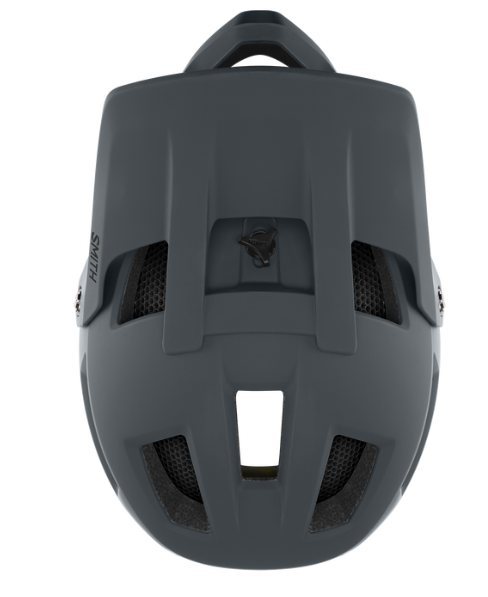
The outer shell of the Smith Mainline MIPS Bike Helmet is made of polycarbonate. Polycarbonate is a strong and lightweight material that is commonly used in bicycle helmets. It is resistant to impact and abrasion, and it can withstand a wide range of temperatures.
Polycarbonate is a good choice for bicycle helmet shells because it is both strong and lightweight. It also has good impact resistance and abrasion resistance. This makes it a good material to protect your head from injuries in the event of a crash.
Here are some of the benefits of using polycarbonate as a shell material for bicycle helmets:
- Strong and lightweight
- Good impact resistance
- Good abrasion resistance
- Resistant to a wide range of temperatures
- Relatively inexpensive
Overall, polycarbonate is a good choice for the outer shell of a bicycle helmet. It is strong, lightweight, and impact-resistant, and it can withstand a wide range of temperatures.
Comfort Padding
The Smith Mainline MIPS Bike Helmet has a very comfortable padding system. The padding is made of a soft and breathable material that is designed to wick away moisture and keep your head cool and dry.
The padding is also strategically placed throughout the helmet to provide even pressure distribution and prevent hot spots from developing. Additionally, the helmet comes with a variety of different pad thicknesses, so you can customize the fit to your liking.
Here are some of the features of the comfort padding in the Smith Mainline MIPS Bike Helmet:
- Soft and breathable material
- Designed to wick away moisture
- Even pressure distribution
- Prevents hot spots
- Customizable fit
Overall, the comfort padding in the Smith Mainline MIPS Bike Helmet is excellent. It is soft, breathable, and provides even pressure distribution. Additionally, the customizable fit allows you to find the perfect fit for your head.
6) Smith Engage 2 Mips Bike Helmet

The Smith Engage 2 MIPS Bike Helmet is known as a budget-friendly price point while not compromising on comfort. It has good head coverage, light feel when riding, and effective airflow, making it a great value choice.
The helmet is well-constructed with a MIPS liner for added security and features 21 vents for air circulation, though the venting is noted to be less effective compared to other models.
Despite these positive attributes, there was a mention of fit issues in one review, where the helmet tended to slide forward during a ride, indicating a potential area for improvement.
Safety Standards
The Smith Engage 2 is certified by both the CPSC and CE EN 1078, which means it meets the highest safety standards for bicycle helmets. It also features MIPS (Multi-directional Impact Protection System), which helps to reduce rotational forces in the event of a crash.
Fit
The Smith Engage 2 has a dial-adjustable fit system that allows you to find a secure and comfortable fit. The helmet also has an extended back coverage for added protection.
Retention System
The Smith Engage 2 uses a low-bulk, single-layer webbing retention system that is lightweight and comfortable. The webbing is also adjustable to ensure a secure fit.
Ventilation
The Smith Engage 2 has 21 fixed vents that provide consistent airflow, even at low speeds. The helmet also features Smith's AirEvac ventilation system, which helps to prevent fogging on your eyewear.
Visor
The Smith Engage 2 has a two-position adjustable visor that can be rotated up for on-the-go goggle storage. The visor is also compatible with Smith's AirEvac ventilation system.
Weight
The Smith Engage 2 weighs in at a mere 350 grams for a medium size, making it one of the lightest mountain bike helmets on the market.
Shell Material
The Smith Engage 2 has a polycarbonate shell that is durable and impact-resistant. The shell is also fused to the EPS foam liner using in-mold construction, which results in a more seamless and protective helmet.
Comfort Padding
The Smith Engage 2 has performance comfort lining that is soft and breathable. The padding is also removable and washable for easy cleaning.
Overall
The Smith Engage 2 is a great mountain bike helmet for riders of all levels. It offers advanced safety features, a comfortable fit, and excellent ventilation at a reasonable price.
7) Troy Lee Designs A2 Decoy Mips Helmet
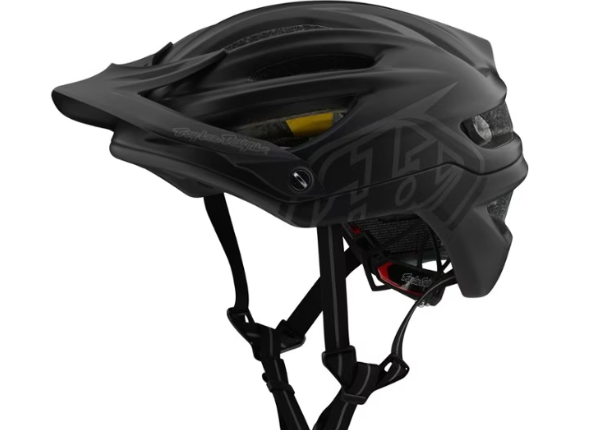
The Troy Lee Designs A2 Decoy MIPS Helmet is appreciated in several reviews for its enjoyable fit, breatability, and being light weight, which make it a top choice among mountain biking enthusiasts.
It stands out as the first in its class to offer both slow and fast impact protection, earning high marks for comfort with an updated wicking, odor-resistant liner, making it a reliable choice for those prioritizing safety and comfort.
However, it's noted for being on the expensive side and lacking in visor adjustment, which might deter bikers on a budget or those seeking more customizable features.
Safety Standards
The Troy Lee Designs A2 Decoy MIPS Helmet is certified by both the CPSC and CE EN 1078, which means it meets the highest safety standards for bicycle helmets. It also features MIPS (Multi-directional Impact Protection System), which helps to reduce rotational forces in the event of a crash.
Fit
The Troy Lee Designs A2 Decoy MIPS Helmet has a dial-adjustable fit system that allows you to find a secure and comfortable fit. The helmet also has an extended back coverage for added protection.
Retention System
The Troy Lee Designs A2 Decoy MIPS Helmet uses a low-profile, adjustable retention system that is lightweight and comfortable. The system is also easy to use, even with gloves on.
Ventilation
The Troy Lee Designs A2 Decoy MIPS Helmet has 13 large vents that provide excellent airflow, even at low speeds. The helmet also features Troy Lee Designs' proprietary ventilation system, which helps to keep your head cool and dry.
Visor
The Troy Lee Designs A2 Decoy MIPS Helmet has a three-position adjustable visor that can be rotated up for on-the-go goggle storage. The visor is also durable and impact-resistant.
Weight
The Troy Lee Designs A2 Decoy MIPS Helmet weighs in at a mere 350 grams for a medium size, making it one of the lightest trail helmets on the market.
Shell Material
The Troy Lee Designs A2 Decoy MIPS Helmet has a polycarbonate shell that is durable and impact-resistant. The shell is also fused to the EPS foam liner using in-mold construction, which results in a more seamless and protective helmet.
Comfort Padding
The Troy Lee Designs A2 Decoy MIPS Helmet has X-Static Pure Silver comfort liner that is soft, breathable, and odor-resistant. The padding is also removable and washable for easy cleaning.
Overall
The Troy Lee Designs A2 Decoy MIPS Helmet is a great trail helmet for riders of all levels. It offers advanced safety features, a comfortable fit, and excellent ventilation at a reasonable price.
8) Smith Convoy MIPS Bike Helmet
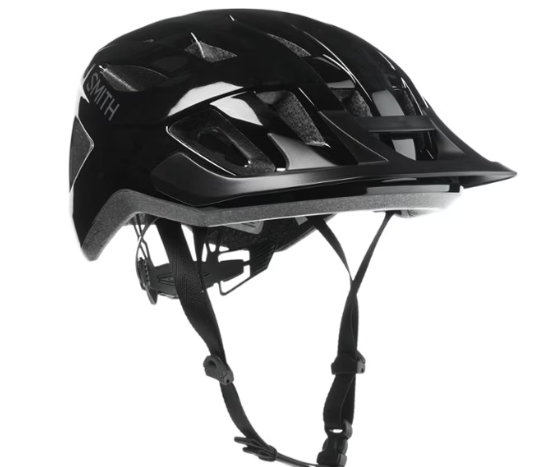
The Smith Convoy MIPS Bike Helmet is recognized for its superior comfort and affordability, especially for the level of protection it offers with its MIPS technology.
This makes it a great choice for both recreational cyclists and mountain biking enthusiasts.
The helmet's design features a premium fit and protection elements, and is noted for its weight and durability ratings, which is quite impressive given its budget-friendly price point.
On the downside, while it boasts features borrowed from more expensive models, some reviewers have pointed out that its appearance can come off as a bit cheap, and the fixed peak might be a detracting factor for some users.
Safety Standards
The Smith Convoy MIPS Bike Helmet is certified by both the CPSC and CE EN 1078, which means it meets the highest safety standards for bicycle helmets. It also features MIPS (Multi-directional Impact Protection System), which helps to reduce rotational forces in the event of a crash.
Fit
The Smith Convoy MIPS Bike Helmet has a dial-adjustable fit system that allows you to find a secure and comfortable fit. The helmet also has an extended back coverage for added protection.
Retention System
The Smith Convoy MIPS Bike Helmet uses a low-bulk, single-layer webbing retention system that is lightweight and comfortable. The webbing is also adjustable to ensure a secure fit.
Ventilation
The Smith Convoy MIPS Bike Helmet has 20 fixed vents that provide consistent airflow, even at low speeds. The helmet also features Smith's AirEvac ventilation system, which helps to prevent fogging on your eyewear.
Visor
The Smith Convoy MIPS Bike Helmet has a fixed visor that provides some protection from the sun and rain.
Weight
The Smith Convoy MIPS Bike Helmet weighs in at a mere 300 grams for a medium size, making it one of the lightest mountain bike helmets on the market.
Shell Material
The Smith Convoy MIPS Bike Helmet has a polycarbonate shell that is durable and impact-resistant. The shell is also fused to the EPS foam liner using in-mold construction, which results in a more seamless and protective helmet.
Comfort Padding
The Smith Convoy MIPS Bike Helmet has performance comfort lining that is soft and breathable. The padding is also removable and washable for easy cleaning.
Overall
The Smith Convoy MIPS Bike Helmet is a great value for the money. It offers essential safety features, a comfortable fit, and excellent ventilation at an affordable price.
9) Fox Speedframe Mips Bike Helmet
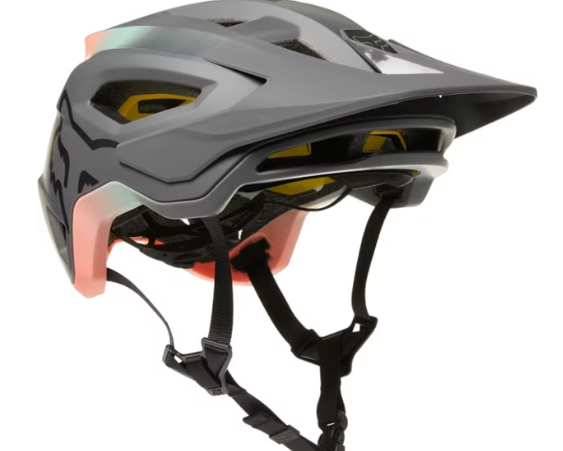
The Fox Speedframe MIPS Bike Helmet is known for its safety features and aesthetic appeal, finding a balance between function and design.
It boasts a snug fit and easy adjustment system, alongside good airflow, although some reviews mention a minor issue of moisture retention on hot and humid days.
However, it has been pointed out that the helmet has some compatibility issues with goggles and potential fit limitations, which could be a downside for some riders.
Safety Standards
The Fox Speedframe MIPS Bike Helmet is certified by both the CPSC and CE EN 1078, which means it meets the highest safety standards for bicycle helmets. It also features MIPS (Multi-directional Impact Protection System), which helps to reduce rotational forces in the event of a crash.
Fit
The Fox Speedframe MIPS Bike Helmet has a 360° Fit System that allows you to find a secure and comfortable fit. The helmet also has an extended back coverage for added protection.
Retention System
The Fox Speedframe MIPS Bike Helmet uses a low-bulk, single-layer webbing retention system that is lightweight and comfortable. The webbing is also adjustable to ensure a secure fit.
Ventilation
The Fox Speedframe MIPS Bike Helmet has 17 fixed vents that provide consistent airflow, even at low speeds. The helmet also features Fox's Varizorb EPS foam liner, which helps to manage impact energy and reduce the risk of concussion.
Visor
The Fox Speedframe MIPS Bike Helmet has a three-position adjustable visor that can be rotated up for on-the-go goggle storage. The visor is also durable and impact-resistant.
Weight
The Fox Speedframe MIPS Bike Helmet weighs in at a mere 350 grams for a medium size, making it one of the lightest mountain bike helmets on the market.
Shell Material
The Fox Speedframe MIPS Bike Helmet has a polycarbonate shell that is durable and impact-resistant. The shell is also fused to the EPS foam liner using in-mold construction, which results in a more seamless and protective helmet.
Comfort Padding
The Fox Speedframe MIPS Bike Helmet has performance comfort lining that is soft, breathable, and moisture-wicking. The padding is also removable and washable for easy cleaning.
Overall
The Fox Speedframe MIPS Bike Helmet is a great choice for mountain bikers of all levels. It offers excellent protection, performance, and comfort at a reasonable price.
10) Fox Mainframe TRVRS Mips Bike Helmet
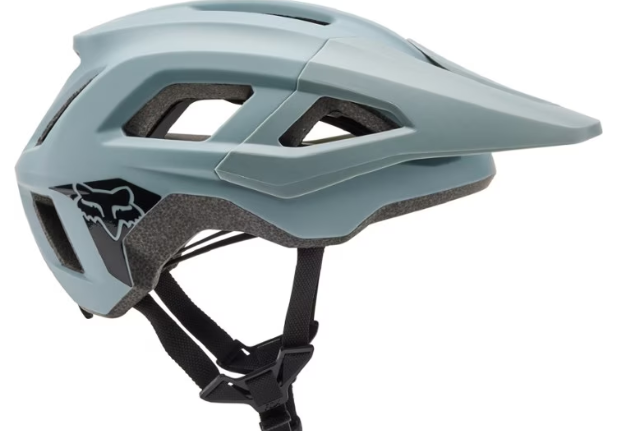
The Fox Mainframe TRVRS MIPS Bike Helmet is liked for being a budget-friendly and safe option. It's hailed for its solid trail protection courtesy of the MIPS technology.
The helmet's design ensures a decent level of coverage, with optimized venting for efficient cooling even during intense rides.
On the downside, some reviews noted that the helmet tends to get warmer around the MIPS cradle during longer climbs, a minor setback for riders who might engage in extended uphill rides
Safety Standards
The Fox Mainframe TRVRS MIPS Bike Helmet is certified by both the CPSC and CE EN 1078, which means it meets the highest safety standards for bicycle helmets. It also features MIPS (Multi-directional Impact Protection System), which helps to reduce rotational forces in the event of a crash.
Fit
The Fox Mainframe TRVRS MIPS Bike Helmet has a dial-adjustable fit system that allows you to find a secure and comfortable fit. The helmet also has an extended back coverage for added protection.
Retention System
The Fox Mainframe TRVRS MIPS Bike Helmet uses a low-bulk, single-layer webbing retention system that is lightweight and comfortable. The webbing is also adjustable to ensure a secure fit.
Ventilation
The Fox Mainframe TRVRS MIPS Bike Helmet has 13 fixed vents that provide consistent airflow, even at low speeds. The helmet also features Fox's Varizorb EPS foam liner, which helps to manage impact energy and reduce the risk of concussion.
Visor
The Fox Mainframe TRVRS MIPS Bike Helmet has a two-position adjustable visor that can be rotated up for on-the-go goggle storage. The visor is also durable and impact-resistant.
Weight
The Fox Mainframe TRVRS MIPS Bike Helmet weighs in at a mere 390 grams for a medium size, making it one of the lightest trail helmets on the market.
Shell Material
The Fox Mainframe TRVRS MIPS Bike Helmet has a polycarbonate shell that is durable and impact-resistant. The shell is also fused to the EPS foam liner using in-mold construction, which results in a more seamless and protective helmet.
Comfort Padding
The Fox Mainframe TRVRS MIPS Bike Helmet has performance comfort lining that is soft, breathable, and moisture-wicking. The padding is also removable and washable for easy cleaning.
Overall
The Fox Mainframe TRVRS MIPS Bike Helmet is a great value for the money. It offers essential safety features, a comfortable fit, and excellent ventilation at an affordable price.
11) Cannondale Trail Bike Helmet
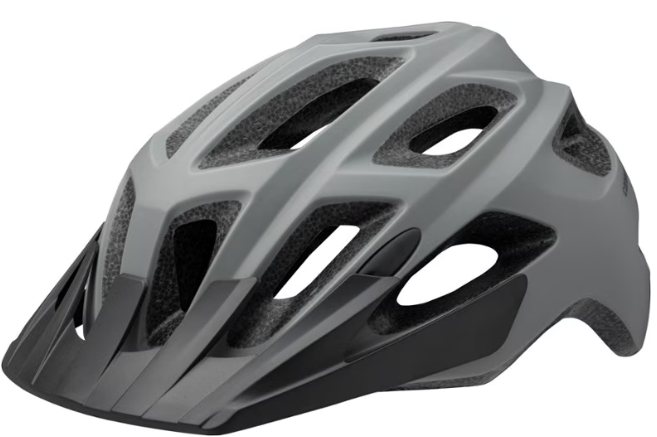
The Cannondale Trail Bike Helmet is suitable for off-road adventures and has 16 air vents that promotes comfort and breathability during rides.
Its construction emphasizes safety and convenience, featuring an InMold polycarbonate shell with an EPS liner and a fixed visor, providing enhanced protection and shielding against external elements.
Moreover, users appreciate its comfort and adjustability, although a slight desire for more room in larger sizes is expressed, underscoring a well-rounded helmet for trail enthusiasts with the minor caveat of size adaptability for those with larger head dimensions.
Safety Standards
The Cannondale Trail Bike Helmet is certified by both the CPSC and CE EN 1078, which means it meets the highest safety standards for bicycle helmets. It does not feature MIPS (Multi-directional Impact Protection System), but it does have an increased rear coverage for added protection.
Fit
The Cannondale Trail Bike Helmet has a dial-adjustable fit system that allows you to find a secure and comfortable fit. The helmet also has an extended back coverage for added protection.
Retention System
The Cannondale Trail Bike Helmet uses a low-bulk, single-layer webbing retention system that is lightweight and comfortable. The webbing is also adjustable to ensure a secure fit.
Ventilation
The Cannondale Trail Bike Helmet has 16 fixed vents that provide consistent airflow, even at low speeds.
Visor
The Cannondale Trail Bike Helmet has a fixed visor that provides some protection from the sun and rain.
Weight
The Cannondale Trail Bike Helmet weighs in at a mere 280 grams for a medium size, making it one of the lightest mountain bike helmets on the market.
Shell Material
The Cannondale Trail Bike Helmet has a polycarbonate shell that is durable and impact-resistant. The shell is also fused to the EPS foam liner using in-mold construction, which results in a more seamless and protective helmet.
Comfort Padding
The Cannondale Trail Bike Helmet has performance comfort lining that is soft and breathable. The padding is also removable and washable for easy cleaning.
Overall
The Cannondale Trail Bike Helmet is a great value for the money. It offers essential safety features, a comfortable fit, and excellent ventilation at an affordable price.
12) Trek Rally WaveCel Helmet
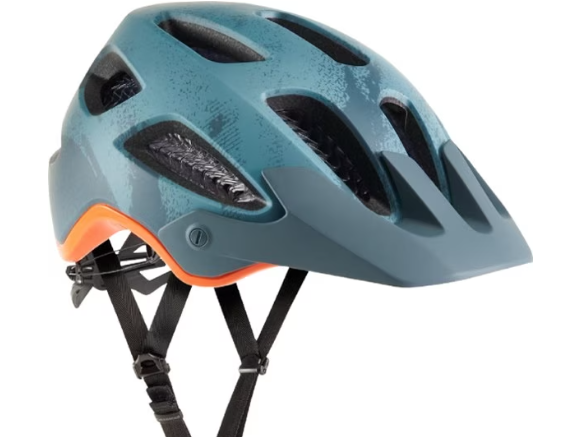
The Trek Rally WaveCel Helmet has advanced WaveCel technology, which is designed to provide superior protection against impacts, fitting well to different head shapes due to its cellular plastic structure.
This helmet is not only about safety but also balances comfort and performance well, especially with its Boa® Fit System and adjustable visor, making it a suitable choice for trail riders who value these aspects.
However, there are some concerns about fit, particularly for individuals who wear sunglasses while riding, as well as the helmet's Boa system possibly causing some discomfort if it rides down too far on the ears.
Despite these minor drawbacks, the affordable price point, especially given the advanced safety features and a 1-year crash replacement warranty, make this helmet a considerable option for those looking to balance cost, comfort, and protection.
Safety Standards
The Trek Rally WaveCel Helmet is certified by both the CPSC and CE EN 1078, which means it meets the highest safety standards for bicycle helmets. It also features WaveCel technology, which is designed to absorb a wider range of impact forces than traditional foam helmets.
Fit
The Trek Rally WaveCel Helmet has a dial-adjustable fit system that allows you to find a secure and comfortable fit. The helmet also has an extended back coverage for added protection.
Retention System
The Trek Rally WaveCel Helmet uses a low-bulk, single-layer webbing retention system that is lightweight and comfortable. The webbing is also adjustable to ensure a secure fit.
Ventilation
The Trek Rally WaveCel Helmet has 21 fixed vents that provide consistent airflow, even at low speeds. The helmet also features Trek's AirEvac ventilation system, which helps to prevent fogging on your eyewear.
Visor
The Trek Rally WaveCel Helmet has a two-position adjustable visor that can be rotated up for on-the-go goggle storage. The visor is also durable and impact-resistant.
Weight
The Trek Rally WaveCel Helmet weighs in at a mere 350 grams for a medium size, making it one of the lightest mountain bike helmets on the market with WaveCel technology.
Shell Material
The Trek Rally WaveCel Helmet has a polycarbonate shell that is durable and impact-resistant. The shell is also fused to the WaveCel liner using in-mold construction, which results in a more seamless and protective helmet.
Comfort Padding
The Trek Rally WaveCel Helmet has performance comfort lining that is soft and breathable. The padding is also removable and washable for easy cleaning.
Overall
The Trek Rally WaveCel Helmet is a great choice for mountain bikers of all levels. It offers advanced safety features, a comfortable fit, and excellent ventilation at a reasonable price.
How To Choose The Perfect Mountain Bike Helmet
Choosing the right mountain bike helmet is crucial for your safety while riding off-road. Here are some important factors to consider when selecting a mountain bike helmet:
Safety Features:
Mountain bike helmets incorporate various safety features to provide protection during rides. Understanding these features can help you make an informed decision when choosing a helmet:
- Outer Shell: The outer shell of a mountain bike helmet is typically made of a tough and impact-resistant material like polycarbonate. This shell is designed to distribute and absorb the force of an impact, preventing direct trauma to the head.
- Impact Foam: Inside the helmet, there is a layer of impact-absorbing foam, usually made of expanded polystyrene (EPS) or similar materials. This foam is crucial for cushioning your head in the event of a crash. When an impact occurs, the foam compresses to absorb and dissipate the force, reducing the risk of head injuries.
- MIPS (Multi-directional Impact Protection System): MIPS is a technology that can enhance safety by addressing rotational forces during an impact. The MIPS liner is a low-friction layer inside the helmet that allows a slight movement between the helmet and your head upon impact. This mimics the brain's natural protection mechanism and can reduce the risk of rotational brain injury in certain types of impacts.
- Retention System: The retention system, often in the form of adjustable straps and a dial or ratchet mechanism, helps ensure a secure and snug fit. A properly adjusted retention system prevents the helmet from moving or coming off during a crash, maintaining its protective capabilities.
- Ventilation: While primarily aimed at comfort, good ventilation also indirectly contributes to safety. Overheating can lead to discomfort and distraction, increasing the risk of accidents. Ventilation systems in helmets help keep your head cool and focused.
- Visor: A visor serves a dual purpose – it can shield your eyes from sun, rain, or debris and provide some level of facial protection in the event of a crash. Some visors are designed to break away upon impact to prevent excessive force on the neck.
- Full-Face Protection: Full-face mountain bike helmets offer additional protection for the face, jaw, and chin. They are commonly used for downhill and aggressive riding where high-speed crashes are more likely. These helmets are designed with an extended chin guard and often incorporate extra impact foam.
- Strap Buckles: The strap buckles should be easy to use and secure. Quick-release buckles allow for easy removal of the helmet in the event of an emergency.
- Certifications: Look for helmets that meet safety standards like CPSC (Consumer Product Safety Commission) or ASTM (American Society for Testing and Materials). These certifications indicate that the helmet has passed standardized tests for impact protection.
- Extended Coverage: Some helmets feature extended coverage around the back and sides of the head, providing added protection for these vulnerable areas.
- Aramid or Carbon Fiber Reinforcements: High-end helmets may incorporate aramid (Kevlar) or carbon fiber reinforcements in critical areas to increase strength and impact resistance without adding excessive weight.
- Multi-Impact Capability: While most helmets are designed for single impacts, some advanced models are built to withstand multiple impacts, which can be beneficial if you plan to do a lot of aggressive riding.
When selecting a mountain bike helmet, prioritize safety features that match your riding style and preferences. Keep in mind that while helmets are designed to reduce the risk of head injuries, no helmet can guarantee total protection in all situations. Safe riding practices, proper helmet fit, and regular helmet inspection and replacement are also essential for your safety on the trails.
Ventilation

Ventilation is a crucial factor to consider when choosing a mountain bike helmet. Proper airflow helps regulate your body temperature, keeping you cool and comfortable during rides. Here's an in-depth look at ventilation and its significance:
Vent Design: Mountain bike helmets are designed with vents strategically placed around the shell. These vents allow air to flow through the helmet, carrying away excess heat and moisture from your head.
Number of Vents: The number of vents can vary from helmet to helmet. More vents typically mean better airflow. However, it's important to strike a balance between ventilation and impact protection. High-end helmets often have a larger number of vents without compromising safety.
Ventilation Channels: Some helmets feature channels or grooves inside the helmet that direct airflow over your head. These channels enhance ventilation efficiency by allowing air to flow more smoothly.
Aerodynamics: Some helmets are designed with aerodynamic considerations in mind. While aerodynamic helmets may have fewer vents, they are designed to reduce air resistance at higher speeds. These are often favored by competitive riders seeking every possible advantage.
In-Mold Construction: In-mold construction is a process where the outer shell and the inner foam are fused together during manufacturing. This construction method often allows for more and larger vents compared to traditional construction methods.
Removable Liner or Pads: Some helmets come with removable and washable liners or pads. These liners can absorb sweat and moisture, helping to keep your head dry and comfortable during rides.
Adjustable Ventilation: Some advanced helmets come with adjustable vents that allow you to control the airflow. You can open or close specific vents to customize the level of ventilation based on weather conditions.
Bug Netting: Some helmets have bug netting integrated into the vents. This feature prevents insects and debris from entering the helmet while still allowing air to flow through.
Sweat Management: Helmets with well-designed ventilation help in moisture management. Proper airflow aids in the evaporation of sweat, keeping you drier and more comfortable.
Weight Consideration: Helmets with a higher number of vents may weigh slightly less due to the reduced material used in the shell. This can contribute to overall comfort, especially on long rides.
Safety and Ventilation Balance: While ventilation is crucial, it's important not to compromise safety for airflow. High-quality helmets are engineered to provide adequate ventilation without sacrificing impact protection.
Consider Riding Conditions: If you often ride in hot and humid conditions, prioritizing a helmet with excellent ventilation is especially important. Conversely, if you frequently ride in colder climates, you may want a helmet with adjustable vents to retain more heat when needed.
Ultimately, the level of ventilation you need will depend on your personal preferences and the riding conditions you frequently encounter. It's recommended to try on helmets and pay attention to how well-ventilated they feel. Remember that comfort and safety should always be balanced when choosing a mountain bike helmet.
Visor

The visor is an important feature of many mountain bike helmets. It serves several functions, ranging from enhancing comfort to providing protection against various elements during your rides. Here's an in-depth look at the visor and its significance:
Sun Protection: One of the primary functions of a visor is to shield your eyes and face from the sun's glare. Riding in bright sunlight without eye protection can lead to discomfort, reduced visibility, and even sunburn. The visor provides shade and helps you maintain a clear view of the trail.
Rain and Weather Protection: Visors also offer protection from rain, snow, and other weather conditions. They help prevent water from directly hitting your face, reducing the need for additional eyewear or goggles during light rain or drizzle.
Eye Protection: Visors can be particularly beneficial for protecting your eyes from dust, dirt, and debris on the trail. Riding at high speeds on off-road terrain can kick up small rocks, branches, and insects, and a visor can act as a barrier.
Facial Protection: In the event of a crash or collision with branches or obstacles, a visor can provide additional protection for your face and forehead. While not a substitute for a full-face helmet, it can help mitigate minor impacts and abrasions.
Adjustability: Many mountain bike helmets have adjustable visors that allow you to fine-tune the angle and height. This adjustability enables you to customize the visor to your preferred position, optimizing sun and weather protection without obstructing your vision.
Detachable Visors: Some helmets feature removable visors. This can be beneficial if you prefer riding without a visor on certain occasions or if you need to replace or clean it.
Goggle Compatibility: For riders who use goggles, a visor can help secure the goggles in place and prevent them from sliding down your face during intense rides. Look for helmets designed with specific goggle strap attachments or cutouts.
Ventilation and Airflow: Some visors are designed with ventilation holes to allow air to flow through. This can help prevent overheating and fogging of eyewear or goggles.
Style and Aesthetics: Visors can also contribute to the overall style and aesthetics of a helmet. They come in various shapes, sizes, and colors, allowing you to choose one that matches your personal style and preferences.
Trail Riding Suitability: While visors are common on mountain bike helmets, they are particularly useful for trail and cross-country riding. Riders who spend long hours on the trail, where varying lighting conditions and weather changes are common, often find visors to be essential.
Downhill and Full-Face Helmets: In downhill and aggressive riding disciplines, full-face helmets are common. These helmets typically have larger and more robust visors designed to provide greater protection for the face and eyes during high-speed descents.
When selecting a mountain bike helmet with a visor, consider your riding style and the conditions you frequently encounter. The visor can significantly enhance your comfort and safety on the trails, but it's essential to ensure it doesn't obstruct your vision or become a distraction. Adjust the visor to suit your needs and preferences before each ride to optimize its effectiveness.
Weight
Wrapping Things Up
Selecting the right mountain bike helmet is a decision that directly impacts your safety, comfort, and overall riding experience. The world of mountain biking offers a diverse range of terrains and riding styles, and fortunately, there are helmets designed to suit each one.
From lightweight and well-ventilated half-shell helmets perfect for cross-country adventures to robust and full-face helmets engineered for downhill thrills, the options are vast. Your choice should align with your riding style, personal preferences, and, above all, prioritize your safety.
When evaluating mountain bike helmets, consider factors such as safety standards, fit, ventilation, visor, weight, and any additional features like MIPS technology. Remember that a well-fitted helmet that meets safety certifications is your first line of defense against head injuries in the event of a crash.
As you embark on your mountain biking journey, always make safety a top priority. Invest in a high-quality helmet, maintain it properly, and replace it if it's been compromised in any way. Keep in mind that the right helmet doesn't just protect your head; it enhances your confidence and enjoyment on the trails, allowing you to push your limits and explore the beauty of the great outdoors with peace of mind.
So, whether you're conquering rocky descents, tackling challenging climbs, or simply enjoying the serenity of the forested trails, choose your mountain bike helmet wisely—it's your trusty companion on every adventure, ensuring you return home safely after each exhilarating ride.
